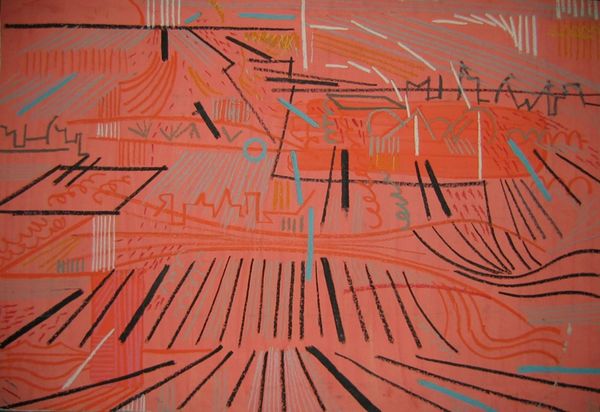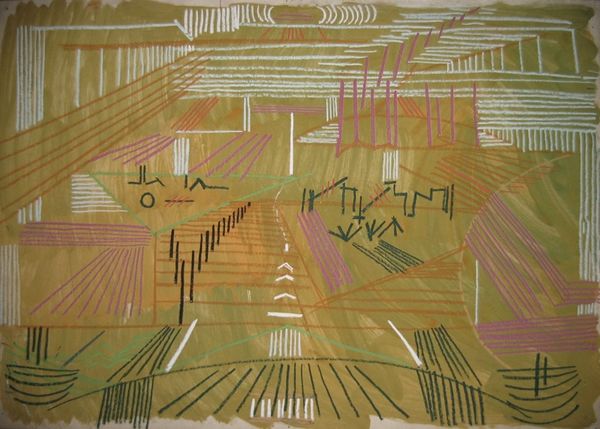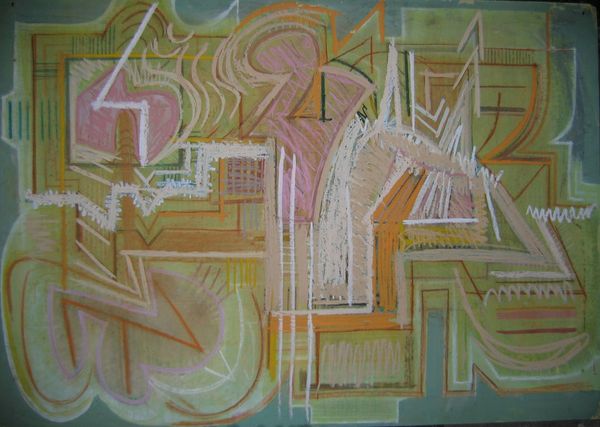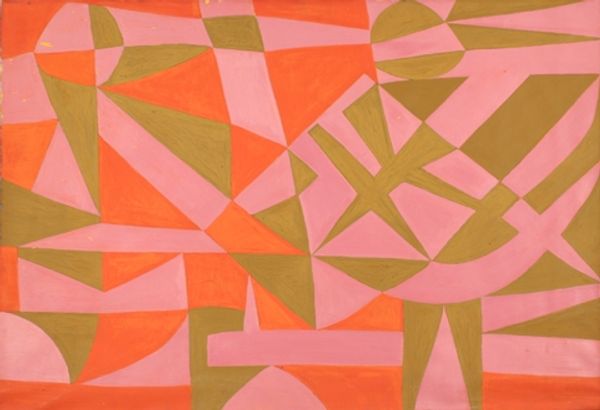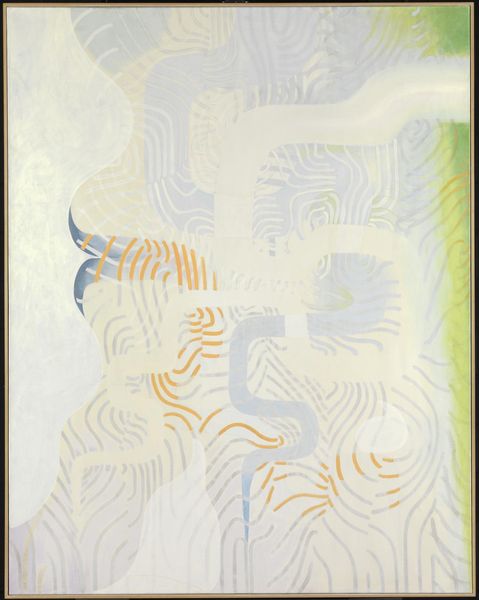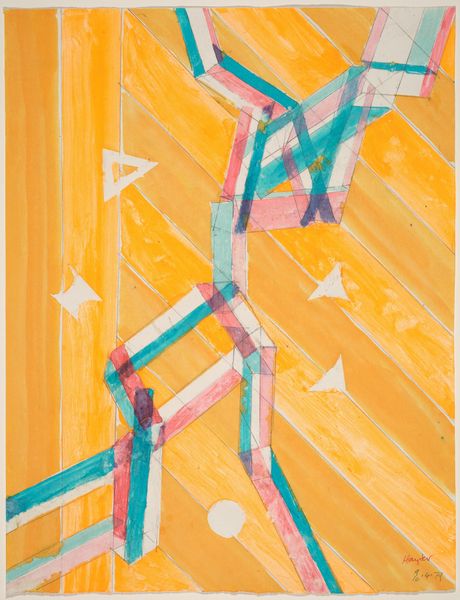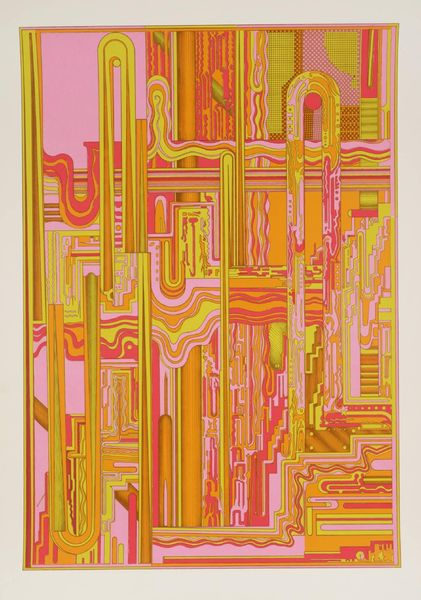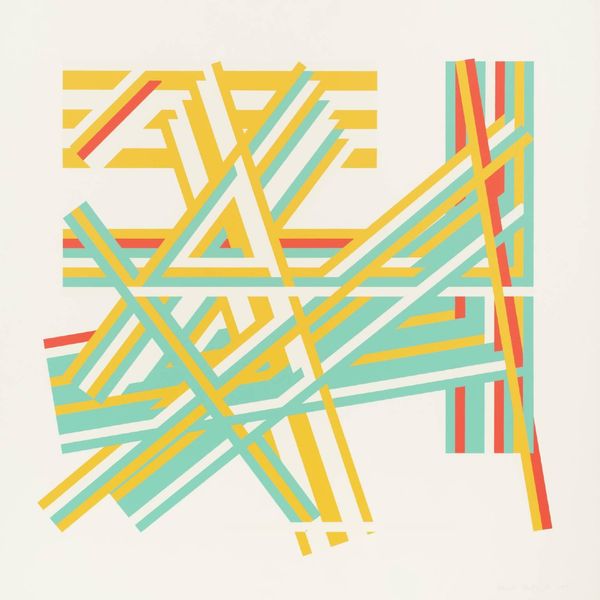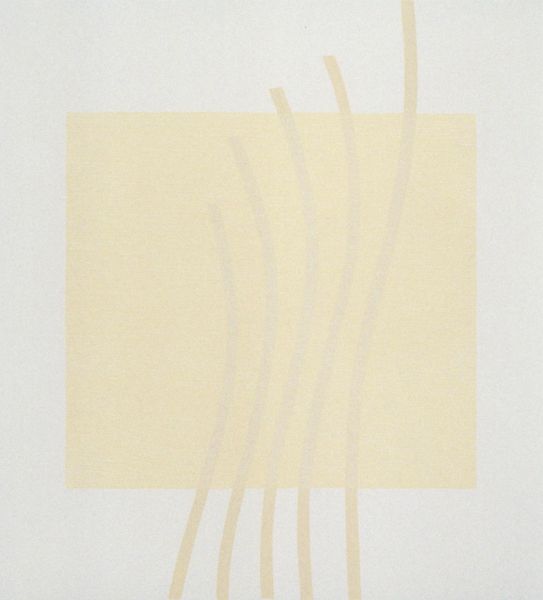
drawing, graphite
#
abstract-expressionism
#
drawing
#
abstract expressionism
#
geometric pattern
#
abstract pattern
#
organic pattern
#
geometric
#
geometric-abstraction
#
abstraction
#
line
#
graphite
#
modernism
Copyright: Constantin Flondor,Fair Use
Curator: Constantin Flondor's 1967 drawing, titled "Energy Field," composed of graphite on paper, immediately presents us with a visual puzzle. Editor: My initial reaction is one of muted energy, surprisingly enough given the title. The subdued palette of yellows and ochres, paired with these very deliberate geometric forms, feels both dynamic and strangely calming. Curator: The title offers a vital clue. This piece emerged from a cultural milieu grappling with ideas of technological advancement and the intangible forces shaping our world. It anticipates how energy impacts both environment and identity. Consider how concepts of "energy" permeated 1960s counterculture, particularly ideas around personal and collective transformation. Editor: Yes, I can see that, but these forms… they’re like abstracted symbols. Are we looking at blueprints, perhaps? There’s an almost archaeological feel to it. As though Flondor is unearthing a forgotten language. I am drawn to the arrangement of repeated motifs—the vertical lines, the curving forms and how they evoke systems and coded communications. Curator: Precisely. Post-war Romanian art, particularly outside officially sanctioned socialist realism, was often coded, employing symbolism as a form of quiet resistance. This use of geometric abstraction, common across Eastern European art of this period, offered a path toward exploring identity without explicitly challenging state ideology. It opened discourse around technology, modernity, and personal agency. Editor: Agency. Yes, that's an important note. Even with the visual language feeling somewhat rigid, there’s a human touch in the layering and slight imperfections of the lines, it feels…very present, not like the product of a machine. I almost wonder if there is reference to folk symbolism at play. Curator: That resonates with me, and I believe it points to something crucial: "Energy Field" isn't simply an abstract composition. It engages with a modernist visual vocabulary to examine larger socio-political and personal transformations during a highly specific time and place. Editor: And for me, I'm left thinking about how we read symbols—how the act of finding a structure within an abstraction, mirroring the artist's own experience in a time of limited self-expression.
Comments
No comments
Be the first to comment and join the conversation on the ultimate creative platform.
